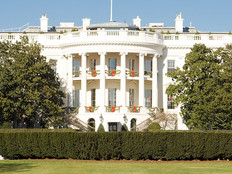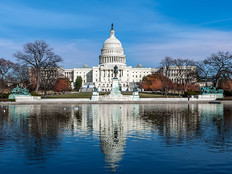What Items Are on Feds’ 2018 IT To-Do Lists?
There’s a lot to look forward to in federal IT in 2018. IT modernization is likely going to get a big push, cybersecurity will evolve, data center optimization and cloud migration will continue, and networks will likely begin to get upgraded.
The Data Center Optimization Initiative and other government initiatives could spur federal IT leaders to make decisions and take action. However, technology leaders at each agency have their own specific priorities and checklists they are trying to meet next year.
Here is a look at the 2018 IT priorities for three federal IT leaders who spoke to FedTech at the 2017 ACT-IAC Executive Leadership Conference in Williamsburg, Va.
HHS Seeks to Enhance Cybersecurity on Multiple Fronts
For the Health and Human Services Department, cybersecurity will be a major priority in 2018, as it will for many agencies. HHS CISO Christopher Wlaschin said the agency will push ahead on four key IT security areas.
HHS will first protect high-value assets, or HVAs. The White House’s final report on IT modernization specifically notes that agencies must focus on protecting HVAs, and “prioritize modernization of legacy IT by focusing on enhancement of security and privacy controls for those assets that are essential for federal agencies to serve the American people and whose security posture is most vulnerable.”
HHS has about 600 systems and about 200 of those are considered legacy IT, while 99 are considered HVAs, according to Wlaschin. The department’s HVAs contain sensitive information on the American public, including personally identifiable information, healthcare information and financial information.
“So, we want to protect those,” Wlaschin said. “We want to make risk-based investment decisions to protect those high-value assets from compromise.”
Secondly, HHS wants to move away from legacy IT, according to Wlaschin. “We spend about 55 percent of our $315 million budget protecting [and] modernizing legacy IT,” he said. “And it’s far too much spent on the old systems that can’t be modernized anymore.” Thirdly, HHS is working with partners at the Department of Homeland Security to advance its Continuous Diagnostics and Mitigation program. HHS will work with DHS “to install tools that give us real-time visibility into vulnerabilities and readiness for cyber events,” Wlaschin said.
And finally, HHS wants to improve its cybersecurity workforce. HHS, like many departments and agencies, struggles to hire and retain a high-quality cyber workforce, Wlaschin said. “So, we’re really spending some time this year on developing methodologies to attract and retain good people to help us with this major cyber mission,” he said.
SBA Builds on Its Cloud Foundation
Small Business Administration CIO Maria Roat noted that over the past year, the SBA has embarked on “a stabilize and modernize” approach. The agency has upgraded its IT infrastructure, stopped investing in new data center hardware and moved to the cloud.
“This next year is really moving into taking a look at the enterprise,” Roat said. “What do we need to do for the enterprise?”
SBA has “laid the foundation over the last 12 months around the infrastructure, moving to the cloud, setting the stage for operations,” Roat said. She acknowledged that the agency has “a lot more work to do.”
In 2018, SBA will look to take an agencywide approach and view to IT to see what needs improvement.
“What are those stovepipes across SBA? What are those things that we really need to hone in on?” Roat said. “So, this year will be the next piece of that enterprise assessment now that we’ve laid that foundation.”
NASA Explores Data Visualization Technology
John Sprague, deputy associate CIO for technology and innovation at NASA, said that the space agency will focus on data.
“Data is inclusive,” he said. “NASA has a lot of data and we’re trying to find better ways to utilize the data, visualize the data.”
Sprague noted that there are many different tools that can help NASA in those areas “and we’re going through and picking those tools and suggesting it.” Sprague, who helps run NASA’s Big Data Working Group, said “that’s our focus and we love dealing with it. And it’s an awesome opportunity for us, too.”
Learn more about federal IT priorities for 2018 in this video.









